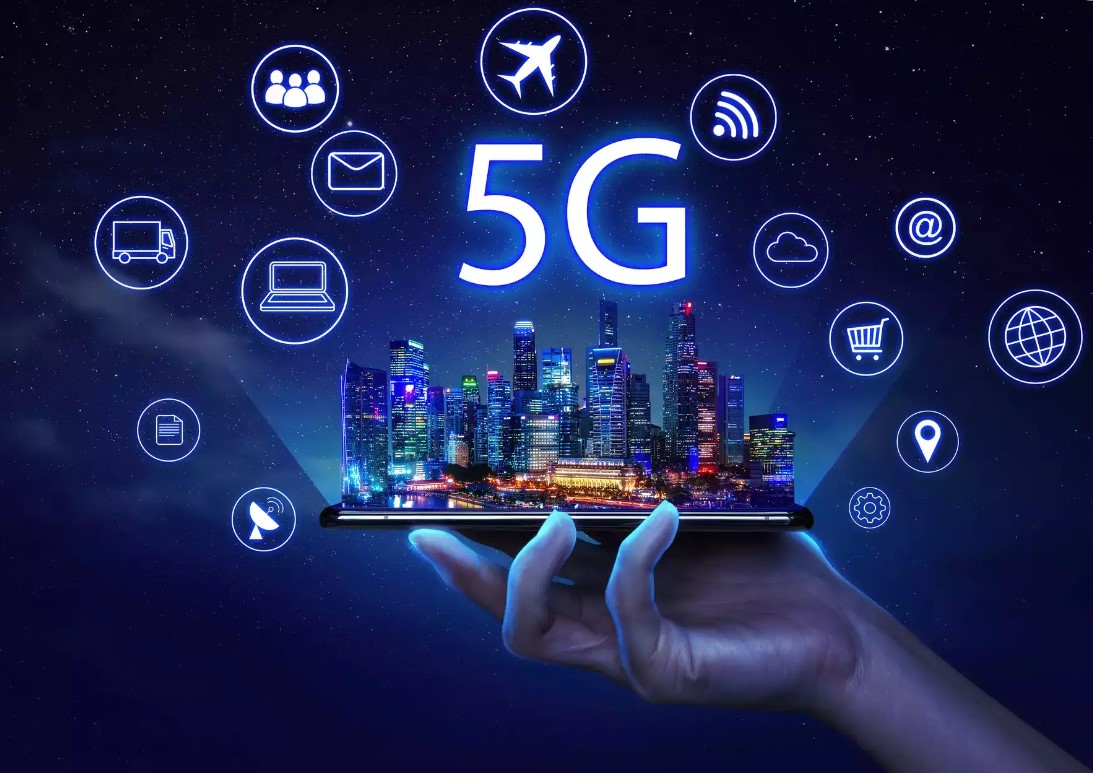Technology is constantly evolving and transforming the world we live in. From artificial intelligence to quantum computing, robotics to cybersecurity, and sustainable technology to the metaverse, many new and exciting trends will shape humanity’s future. In this article, we will explore the top 12 technology trends that you should watch out for in 2024, and how they will impact various aspects of life, society, and the planet.
Generative AI: The Next Frontier of Creativity

Generative AI is a branch of artificial intelligence that can create new content, such as images, text, music, code, and more, based on some input or data. Generative AI can be used for various purposes, such as enhancing productivity, personalization, entertainment, education, and innovation. For example, generative AI can help you design a logo, write a poem, compose a song, generate a resume, or create a video game.
Generative AI is powered by advanced machine learning models, such as generative adversarial networks (GANs), variational autoencoders (VAEs), and transformers. These models can learn from large amounts of data and generate realistic and diverse outputs that can fool human perception. Generative AI is also becoming more accessible and democratized, thanks to platforms and tools that allow anyone to use it without coding skills.
According to Gartner, generative AI will significantly alter 70% of the design and development effort for new web applications and mobile apps by 2026. Generative AI will also enable new forms of expression and creativity that will challenge the boundaries of human imagination.
Quantum Computing: The Race for Quantum Supremacy
Quantum computing is one of the most exciting and promising fields of science and technology, as it has the potential to solve problems that are beyond the reach of conventional computers. However, quantum computing is also a highly competitive and challenging domain, as different countries and companies are racing to achieve quantum supremacy, which means demonstrating a clear advantage of a quantum computer over a classical computer for a specific task.

Some of the current and upcoming trends in quantum computing are:
- Developing and scaling up quantum hardware: Quantum hardware refers to the physical devices that implement qubits, the basic units of quantum information. There are different types of qubits, such as superconducting qubits, trapped ion qubits, photonic qubits, and more, each with their own advantages and disadvantages. The main challenges in quantum hardware are increasing the number, quality, and connectivity of qubits, as well as reducing the noise and errors that affect their performance. Some of the leading players in quantum hardware are Google, IBM, Intel, Microsoft, IonQ, and Rigetti.
- Developing and optimizing quantum software: Quantum software refers to the algorithms, protocols, and applications that run on quantum computers. Quantum software can exploit the unique features of quantum mechanics, such as superposition, entanglement, and interference, to achieve speedup or enhancement over classical software. The main challenges in quantum software are designing efficient and robust algorithms, programming and debugging quantum code, and integrating quantum and classical systems. Some of the leading players in quantum software are Microsoft, Amazon, IBM, Google, Alibaba, and Xanadu.
- Developing and securing quantum communication: Quantum communication refers to the transmission and processing of quantum information over long distances. Quantum communication can enable secure and reliable communication that is resistant to eavesdropping or tampering, thanks to the principles of quantum cryptography. The main challenges in quantum communication are generating and distributing entangled photons, maintaining coherence and fidelity over noisy channels, and building quantum repeaters and networks. Some of the leading players in quantum communication are China, US, EU, Japan, and Australia.
- Developing and exploring quantum applications: Quantum applications refer to the practical use cases and benefits of quantum computing for various domains and sectors. Quantum applications can address problems that are hard or impossible for classical computers to solve, such as optimization, simulation, machine learning, cryptography, chemistry, physics, medicine, finance, and more. The main challenges in quantum applications are identifying and validating the problems that can benefit from quantum computing, benchmarking and comparing the performance of quantum and classical solutions, and demonstrating the value proposition and impact of quantum computing. Some of the leading players in quantum applications are IBM, Google, Microsoft, Amazon, Alibaba, Zapata Computing, Cambridge Quantum Computing, QC Ware, 1QBit, and QxBranch.
The race for quantum supremacy is not only a scientific and technological endeavor, but also a strategic and geopolitical one. The countries and companies that achieve quantum supremacy will have a significant advantage over their competitors in terms of innovation, security, economy, and influence. Therefore, it is important for all stakeholders to invest in research and development, education and training, collaboration and cooperation, and regulation and ethics in the field of quantum computing.
Robotics: The Rise of the Machines

Robotics is the science and engineering of designing, building, programming, and operating machines that can perform tasks autonomously or semi-autonomously. Robotics can be applied to various domains and sectors, such as manufacturing, agriculture, healthcare, education, entertainment, military, space exploration, and more. For example,
- Robotics can help automate repetitive and dangerous tasks
- Robotics can enhance human capabilities and augment human workers
- Robotics can provide social interaction and companionship
- Robotics can explore remote and harsh environments
Robotics is becoming more advanced and intelligent thanks to the convergence of technologies such as artificial intelligence, computer vision, natural language processing, sensors, actuators, and communication networks. Robotics is also becoming more accessible and affordable thanks to the emergence of platforms and tools that enable anyone to create and program robots without technical expertise.
According to IDC, the global spending on robotics systems and drones will reach $128.7 billion in 2020 , an increase of 17.1% over 2019. The compound annual growth rate (CAGR) for robotics systems and drones spending will be 19.8% from 2019 to 2023.
Cybersecurity: The Battle for Digital Security

Cybersecurity is the practice of protecting information systems and networks from cyberattacks that aim to compromise their confidentiality, integrity, or availability. Cybersecurity is essential for ensuring the safety and privacy of individuals, organizations, and nations in the digital age. Cybersecurity is also crucial for enabling the trust and reliability of emerging technologies such as artificial intelligence, quantum computing, robotics, and the internet of things.
Cybersecurity is facing many challenges and threats in the evolving cyber landscape. Some of these include:
- The increasing sophistication and frequency of cyberattacks from various actors such as hackers, cybercriminals, nation-states, and terrorists.
- The growing complexity and diversity of information systems and networks that span across multiple domains, platforms, devices, and locations.
- The expanding attack surface and vulnerability of emerging technologies that introduce new risks and uncertainties.
- The lack of awareness and skills among users and organizations to adopt best practices and standards for cybersecurity.
According to Cybersecurity Ventures, the global cost of cybercrime will reach $10.5 trillion annually by 2025, up from $3 trillion in 2015. The global spending on cybersecurity products and services will exceed $1 trillion cumulatively from 2017 to 2021.
Sustainable Technology: The Quest for Green Innovation
Sustainable technology is the application of technology to address environmental and social challenges and promote sustainable development. Sustainable technology aims to reduce the negative impacts of human activities on the planet and enhance the well-being of people and communities. Sustainable technology can be applied to various domains and sectors, such as energy, transportation, agriculture, manufacturing, construction, waste management, and more. For example,
- Sustainable technology can help generate clean and renewable energy from sources such as solar, wind, hydro, geothermal, and biomass.
- Sustainable technology can help improve the efficiency and performance of transportation systems and vehicles, such as electric cars, hybrid vehicles, smart grids, and intelligent traffic management.
- Sustainable technology can help optimize the use and management of natural resources and materials, such as water, land, crops, metals, plastics, and textiles.
- Sustainable technology can help reduce the generation and emission of waste and pollutants, such as greenhouse gases, carbon dioxide, methane, and nitrogen oxides.
Sustainable technology is driven by the increasing awareness and demand for environmental and social responsibility among consumers, businesses, governments, and civil society. Sustainable technology is also enabled by the advancement and integration of technologies such as artificial intelligence, big data, cloud computing, blockchain, biotechnology, nanotechnology, and more.
According to ResearchAndMarkets.com, the global market for sustainable technologies will grow from $715 billion in 2020 to $1.2 trillion by 2024, at a CAGR of 14%. The key factors driving this growth include the rising environmental concerns, the growing population and urbanization, the increasing government regulations and incentives, and the declining costs of renewable energy.
The Metaverse: The Blending of the Real and the Virtual

The metaverse is a term that describes a shared virtual space that encompasses multiple digital worlds and platforms where people can interact with each other and with digital content. The metaverse is an extension of the internet that enables immersive and persistent experiences that transcend the boundaries of physical reality. The metaverse can be accessed through various devices such as smartphones, tablets, computers, virtual reality headsets, augmented reality glasses, and more.
The metaverse can be used for various purposes such as entertainment, education, work, socialization, commerce, gaming, art, and more. For example,
- The metaverse can provide entertainment options such as watching movies, listening to music, attending concerts, playing games, and exploring virtual worlds.
- The metaverse can provide education opportunities such as taking courses, attending lectures, visiting museums, learning new skills, and collaborating with peers.
- The metaverse can provide work solutions such as holding meetings, conducting presentations, managing projects, and accessing data.
- The metaverse can provide socialization options such as chatting with friends, family, and strangers, joining communities, and expressing oneself.
- The metaverse can provide commerce opportunities such as shopping, selling, advertising, and trading.
The metaverse is emerging as a result of the convergence and innovation of technologies such as virtual reality, augmented reality, mixed reality, 5G, cloud computing, blockchain, artificial intelligence, and more.
According to Strategy Analytics, the global revenue from consumer spending on virtual reality hardware, software, and services will reach $8.5 billion in 2020, up from $3.9 billion in 2019. The global revenue from consumer spending on augmented reality hardware, software, and services will reach $6.2 billion in 2020, up from $3.8 billion in 2019.
Intelligent Applications: The Evolution of Software
Intelligent applications are software applications that leverage artificial intelligence to provide enhanced functionality, usability, and value to users. Intelligent applications can learn from data, user behavior, and feedback to adapt to changing needs and preferences. Intelligent applications can also interact with users through natural language or voice commands, gestures, or facial expressions.
Intelligent applications can be applied to various domains and sectors, such as healthcare, education, finance, entertainment, gaming, and more. For example,
- Intelligent applications can help diagnose diseases, prescribe treatments, monitor health conditions, and provide personalized care.
- Intelligent applications can help deliver customized learning experiences, assess student performance, provide feedback, and enhance engagement.
- Intelligent applications can help manage finances, provide investment advice, detect fraud, and optimize transactions.
- Intelligent applications can help create immersive and interactive entertainment experiences, such as movies, music, games, and art.
Intelligent applications are powered by advanced artificial intelligence techniques, such as machine learning, deep learning, natural language processing, computer vision, speech recognition, and more. Intelligent applications are also enabled by the availability and accessibility of large amounts of data, cloud computing, edge computing, and internet of things.
According to Markets and Markets, the global market for intelligent apps will grow from $11.5 billion in 2018 to $46.2 billion by 2023, at a CAGR of 32.9%. The key factors driving this growth include the increasing demand for advanced analytics, the rising adoption of smart devices, and the growing need for operational efficiency.
Blockchain: The Future of Trust and Transparency

Blockchain is a distributed ledger technology that records and verifies transactions without the need for a central authority or intermediary. Blockchain enables peer-to-peer transactions that are secure, transparent, immutable, and efficient. Blockchain can be used for various purposes such as digital identity, smart contracts, supply chain management, voting systems, digital assets, and more. For example,
- Blockchain can help verify the identity of individuals and organizations and provide them with self-sovereign control over their personal data.
- Blockchain can help execute agreements and contracts automatically and enforceably without the involvement of third parties or intermediaries.
- Blockchain can help track and trace the origin, quality, and movement of goods and services across the supply chain and ensure their authenticity and integrity.
- Blockchain can help enable fair and transparent voting systems that prevent fraud and manipulation and ensure accountability and auditability.
- Blockchain can help create and exchange digital assets such as cryptocurrencies, tokens, non-fungible tokens (NFTs), and more.
Blockchain is based on the principles of cryptography, consensus, and decentralization. Blockchain is also supported by the innovation and integration of technologies such as artificial intelligence, cloud computing, internet of things, and more.
According to Statista, the global spending on blockchain solutions will reach $19 billion in 2024, up from $4.1 billion in 2020. The global blockchain market size will grow from $3 billion in 2020 to $39.7 billion by 2025, at a CAGR of 67.3%.
Internet of Things: The Network of Everything

Internet of Things (IoT) is the concept of connecting physical objects and devices to the internet and to each other, enabling them to collect, exchange, and process data. IoT can be applied to various domains and sectors, such as smart homes, smart cities, smart agriculture, smart healthcare, smart manufacturing, smart transportation, and more. For example,
- IoT can help automate and control various aspects of home appliances, such as lighting, heating, security, entertainment, and more.
- IoT can help monitor and manage various aspects of urban infrastructure, such as traffic, parking, waste, energy, water, and more.
- IoT can help optimize and improve various aspects of agricultural production, such as irrigation, fertilization, pest control, harvesting, and more.
- IoT can help enhance and personalize various aspects of healthcare delivery, such as diagnosis, treatment, prevention, wellness, and more.
- IoT can help increase and streamline various aspects of industrial operations, such as production, quality, maintenance, safety, and more.
- IoT can help improve and innovate various aspects of transportation systems and vehicles, such as navigation, fuel efficiency, safety, comfort, and more.
IoT is enabled by the advancement and proliferation of technologies such as sensors, actuators, wireless communication, cloud computing, edge computing, artificial intelligence, and more.
According to IDC, the global spending on IoT will reach $1.1 trillion in 2023, up from $726 billion in 2019. The global installed base of IoT devices will grow from 26.1 billion in 2019 to 41.6 billion in 2025.
Biotechnology: The Revolution of Life Sciences
Biotechnology is the application of biological systems and organisms to create or modify products or processes for specific purposes. Biotechnology can be applied to various domains and sectors, such as medicine, agriculture, food, environment, industry, and more. For example,
- Biotechnology can help develop new drugs, vaccines, therapies, and diagnostics for various diseases and conditions.
- Biotechnology can help improve the yield, quality, and diversity of crops and livestock, and enhance their resistance to pests, diseases, and environmental stress.
- Biotechnology can help produce novel and nutritious food products, such as plant-based meat, lab-grown meat, and cultured milk.
- Biotechnology can help protect and restore the environment, such as by bioremediation, biofuels, biosensors, and biofertilizers.
- Biotechnology can help create new materials, chemicals, and enzymes for various industrial applications, such as bioplastics, biofuels, biocatalysts, and biosurfactants.
Biotechnology is advancing rapidly thanks to the innovation and integration of technologies such as genomics, proteomics, metabolomics, synthetic biology, gene editing, stem cells, microbiome, and more.
According to Grand View Research, the global biotechnology market size was valued at $449.06 billion in 2019 and is expected to grow at a CAGR of 6.84% from 2020 to 2027. The key factors driving this growth include the increasing demand for new healthcare solutions, the rising prevalence of chronic diseases, the growing population and aging, and the emerging opportunities in emerging markets.
Nanotechnology: The Manipulation of Matter at the Nanoscale

Nanotechnology is the science and engineering of manipulating matter at the nanoscale (1-100 nanometers), which is about the size of a few atoms or molecules. Nanotechnology can be used to create new materials, devices, systems, and phenomena that have novel properties and functions that are not possible at larger scales. Nanotechnology can be applied to various domains and sectors, such as electronics, energy, medicine, materials, environment, security, and more. For example,
- Nanotechnology can help create faster, smaller, and smarter electronic devices and components such as transistors, memory chips, sensors, displays, and batteries.
- Nanotechnology can help generate cleaner and cheaper energy sources and solutions such as solar cells, fuel cells, hydrogen storage, and thermoelectric materials.
- Nanotechnology can help deliver more effective and personalized medical treatments and diagnostics such as nanomedicine, nanodrugs, nanoparticles, nanosensors, and nanorobots.
- Nanotechnology can help develop stronger and lighter materials and structures such as nanocomposites, nanocoatings, nanowires, and nanotubes.
- Nanotechnology can help improve the quality and sustainability of the environment such as by nanofiltration, nanocatalysis, nanodetoxification, and nano bioremediation.
Nanotechnology is enabled by the adv ancement and convergence of technologies such as microscopy, spectroscopy, lithography, self-assembly, molecular engineering, and more.
According to Mordor Intelligence, the global nanotechnology market size was valued at $54.2 billion in 2018 and is expected to grow at a CAGR of 13.7% from 2019 to 2024. The key factors driving this growth include the increasing research and development activities, the rising government support and funding, the growing applications in various industries, and the emerging opportunities in developing countries.
5G: The Next Generation of Wireless Communication

5G is the fifth generation of wireless communication technology that promises to deliver faster speed, lower latency, higher capacity, better reliability, and more connectivity than the previous generations. 5G can be used to support various applications and services that require high bandwidth, low latency, or massive connectivity. 5G can be applied to various domains and sectors, such as internet of things (IoT), smart cities, autonomous vehicles, virtual reality (VR), augmented reality (AR), cloud computing, edge computing, artificial intelligence (AI), and more. For example,
- 5G can help enable IoT devices to communicate with each other and with the cloud in real time and with minimal power consumption.
- 5G can help enable smart cities to monitor and manage various aspects of urban infrastructure such as traffic lights, parking lots, waste bins, street lights, water pipes, and more.
- 5G can help enable autonomous vehicles to communicate with each other and with the infrastructure to ensure safety and efficiency on the roads.
- 5G can help enable VR and AR applications to provide immersive and interactive experiences that require high resolution and low latency.
- 5G can help enable cloud computing and edge computing to provide scalable and distributed computing resources that require high bandwidth and low latency.
- 5G can help enable AI applications to process and analyze large amounts of data that require high bandwidth and low latency.
5G is based on the standards and technologies such as millimeter wave, massive MIMO, beamforming, network slicing, and more. 5G is also supported by the innovation and integration of technologies such as artificial intelligence, blockchain, cloud computing, edge computing, and more.
According to Ericsson, the global 5G subscriptions will reach 2.8 billion by the end of 2025, accounting for 30% of the total mobile subscriptions. The global 5G network coverage will reach 65% by the end of 2025, covering 45% of the world’s population.








